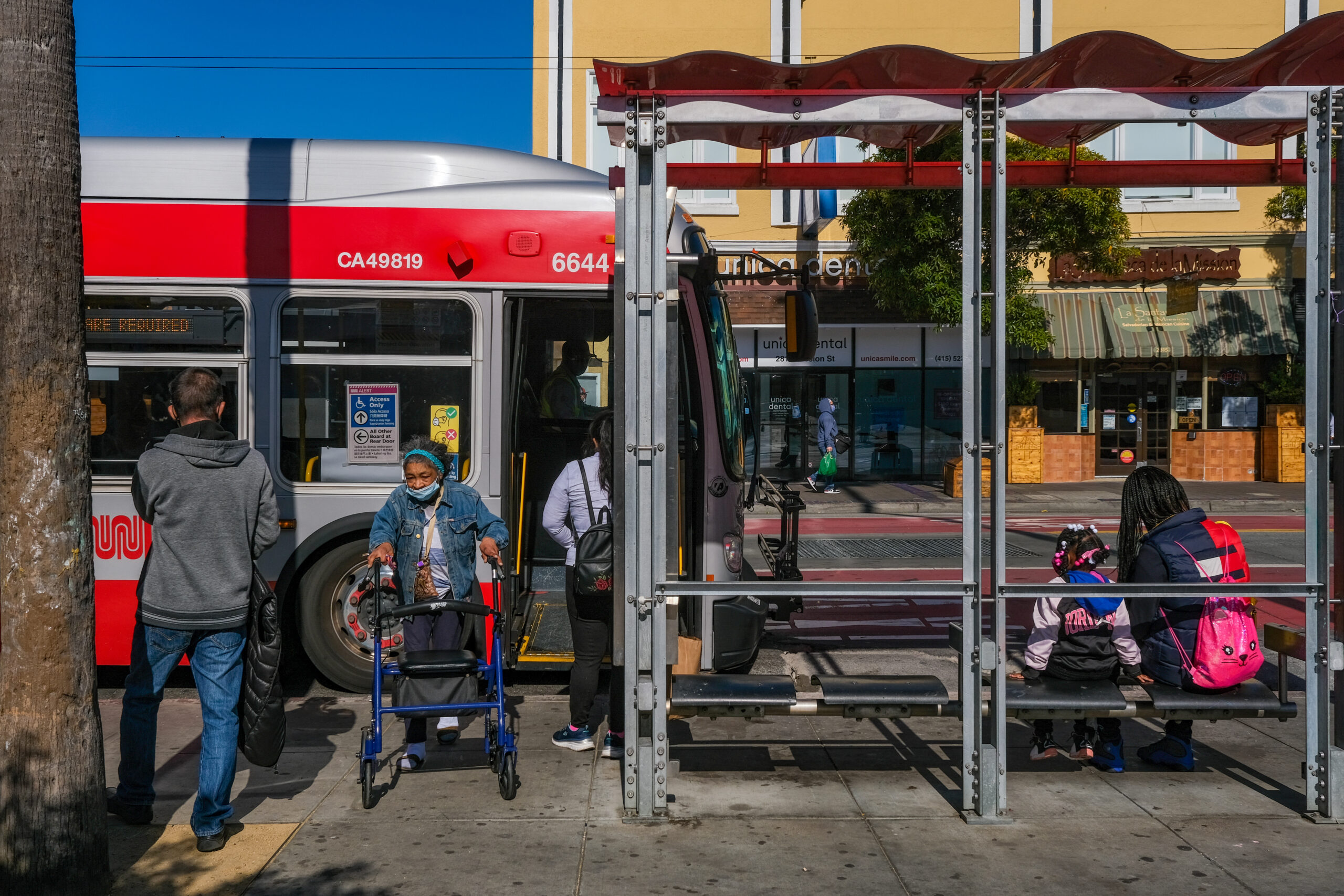A return to normal may be on the horizon for Muni as the San Francisco Municipal Transportation Authority reports most of its staff have returned from Omicron disruptions and ridership is on the rise.
“We are expecting our service to start to stabilize this week,” Director Jeffrey Tumlin said at Tuesday’s SFMTA board meeting.
After hundreds of its staff contracted Omicron this winter, the agency has been working through severe staff shortage: Nearly a quarter of its SFMTA operators caught the coronavirus and had to miss shifts. But Tumlin said the agency is working back up to its normal pre-pandemic staffing levels, which are 20% lower than normal due to a hiring freeze during the first 18 months of the Covid pandemic.
Meanwhile, ridership is ticking steadily up, Tumlin said, and the agency is preparing for an eventual return to normal. According to SFMTA, ridership habits have changed during the pandemic, but the agency is gearing up for workers to start heading back into the office and for demand during peak times to downtown destinations to return.
“What we’re expecting is that downtown San Francisco gets re-occupied kind of on the same cycle that our usual boom-bust cycle happens on,” Tumlin said at the meeting. “We’re starting to see employers bring people back into the office, but at a lower rate than they had in the past.”
With the exception of dips during the height of Omicron, ridership does appear to be recovering—although it’s dispersed differently than before the pandemic. Rather than seeing spikes during traditional commute times, Tumlin said the system is reporting flat ridership throughout the day and far fewer trips to downtown.
“We’re seeing very strong ridership patterns in our neighborhood commercial districts, and to essential institutions like hospitals,” Tumlin said.
Over the past two weeks, the agency has reported around 350,000 daily weekday riders—now at 50% of pre-pandemic numbers, with weekend ridership returning at even faster rates. Bay Area Rapid Transit, too, is reporting its highest ridership so far this year. And Tumlin said the agency has more than enough capacity to handle downtown commuter traffic when it does return.
Still, the effects of Omicron continue to linger, with Muni behind on its plans to return to full pre-pandemic transit capacity. In mid-February, the agency announced that Muni Metro service would expand to midnight on Sundays and announced the extension of the J Church. Its next scheduled service expansion is in mid-April, but SFMTA Transit Director Julie Kirschbaum said the agency is still deciding whether to delay expansions planned for the summer.
“We don't want to put our customers or our staff in the situation they are in now where they are managing canceled runs because of all the other externalities,” Kirschbaum said.
